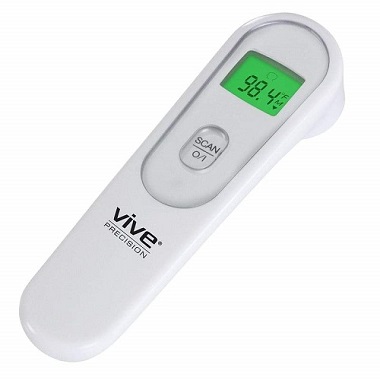If you're experiencing a fever, a digital thermometer will help you determine whether it's present. Infection usually causes a fever, which is an increase in body temperature. The presence of a fever signals that the body is fighting disease, and it makes you feel uncomfortable.
Measuring Body Temperature with digital thermometer
Temperature can be measured with a variety of thermometers. Any digital thermometer should come with instructions for proper use. Make sure to read them carefully. Battery-powered thermometers should be checked. If your batteries are weak, you might notice inconsistent readings.
Average Body Temperature and Fever
The body's average temperature is 98.6 degrees Fahrenheit (°F) or 37 degrees Celsius (°C). It is usual for temperatures to vary from 1° to 2°F. It is usual for the temperature to be lower in the morning and higher in the afternoon. Afternoons and evenings are when it reaches its peak. As an adult, it is considered a fever when the temperature exceeds 100.4°F (38°C). Take a fever reducer medication and drink fluids at home to make yourself more comfortable. Your healthcare provider should be contacted if the temperature is over 102°F (38.8°C) and home treatment does not reduce the temperature.
Using a Digital Thermometer
Temperatures are taken more accurately and quickly with a digital thermometer. In most pharmacies and drug stores, you can find digital thermometers. Prices vary widely for digital thermometers, ranging from $6 to $30. Any thermometer should

"Accurate and Easy to Use: Check Your Temperature with Vive Health Digital Thermometer"
be used following the package instructions. There are three ways to use a digital thermometer. These include:
- Oral: You place a thermometer under your tongue to use this method. Children and adults who can hold a thermometer in their mouths can use this method.
- Rectal: This method involves gently inserting the thermometer into the rectum. Children up to 3 years can undergo this procedure, although it is mainly done on babies. Children older than three years can have their rectal temperatures taken, but it may be hard to keep them still.
- Axillary: Using this method, young children and adults who can't safely take their temperature orally place the thermometer in their armpits. While not as precise as oral or rectal, it can be used as a quick first check. A rectal or oral reading can be taken after this.
Types of Thermometers Not Recommended
The accuracy of some thermometers is questionable. Skin temperature is the only thing measured by plastic strip thermometers. Due to the time, they must remain in the child's mouth to record a temperature; pacifier thermometers are not precise and can be difficult to use accurately. Mercury-containing glass thermometers shouldn't be used because mercury can poison you. A glass break can release mercury, causing this. Contact your local waste department if you still have one of these thermometers and inquire about safe disposal.
Taking Your Temperature
Warm water and soap should be used to wash your hands. After washing a thermometer in cold water, cleaning it with rubbing alcohol, and rinsing away the alcohol, use a clean thermometer. You should wait five minutes before eating or drinking anything to avoid inaccurate readings caused by food temperature. If you are in this situation, keep your mouth shut. Make sure that the thermometer tip is under the tongue when placing it. Wait about 40 seconds before moving the thermometer.